
Getting to Svalbard
Svalbard is geographically closer to the North Pole than to Norway. Surprising then, that getting there is quite so straightforward, with regular flights from Norway to …
Discover MoreSpecial Offers Available: Swoop has access to the widest range of offers and can help you find the right trip, cabin, & price.
Expert impartial advice at no extra cost: no-nonsense advice on 500 voyages across 25 ships
The Arctic Experts. No Compromises: there’s no question we can’t answer
The only B Corp certified Arctic specialist: so your adventures can be a force for good
A full concierge service, unlike booking direct: we leave nothing to chance in delivering your perfect trip
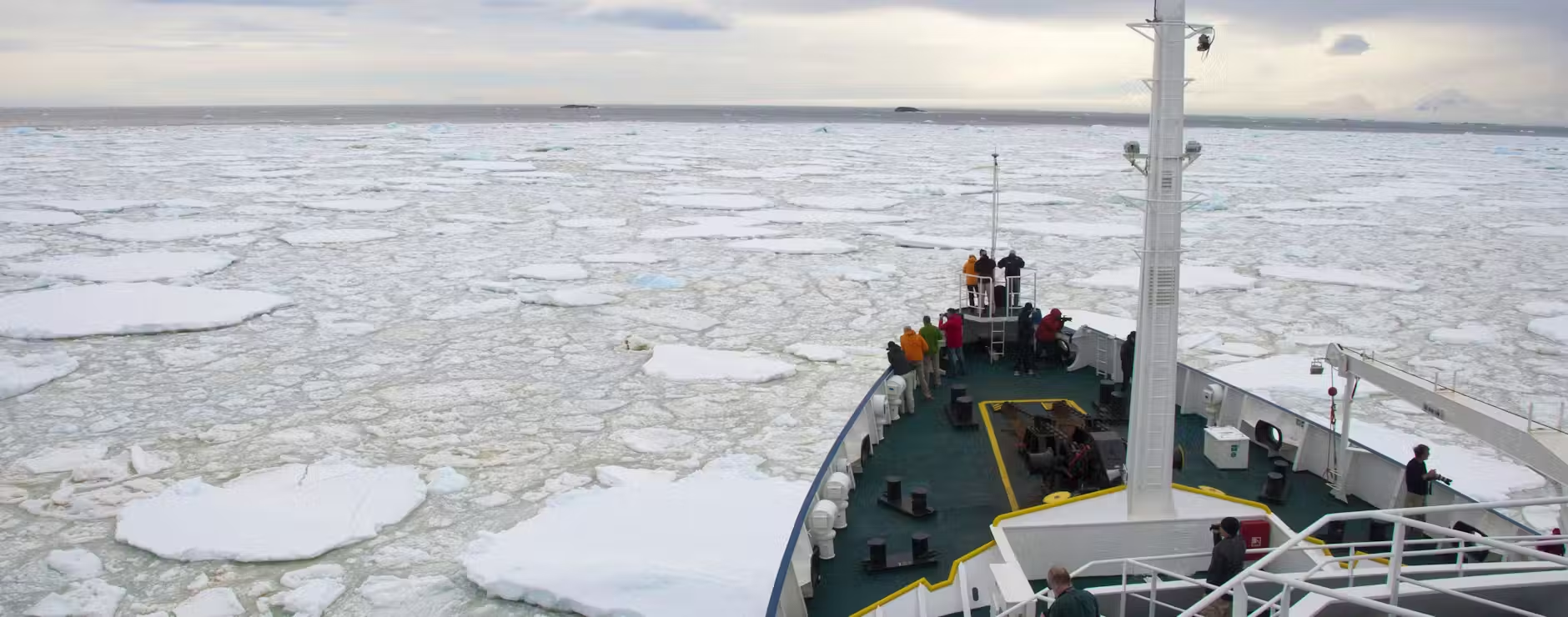
North of the Arctic Circle and halfway between Norway and the North Pole, Svalbard’s dramatic coastline and fjords are largely ice-free during high summer providing incredible opportunities for passengers on expedition ships to enjoy the best of the Arctic in a microcosm.
.jpg?auto=format,enhance,compress&fit=crop&crop=entropy,faces,focalpoint&w=680&h=480&q=40)
The stunning mountains and glaciers of Svalbard

View across the Arctic tundra
.jpg?auto=format,enhance,compress&fit=crop&crop=entropy,faces,focalpoint&w=680&h=480&q=40)
Bears are a very real threat here

Bears exploring the sea ice

Svalbard's stunning scenery

Walrus in Svalbard

Trekkers cross the Arctic ice
.JPG?auto=format,enhance,compress&fit=crop&crop=entropy,faces,focalpoint&w=680&h=480&q=40)
Svalbard's stunning scenery

A bearded seal in Svalbard

Hikers prepare to explore Svalbard

Brunnich's guillemot nesting site in Svalbard

Cruising off the coast of Spitsbergen

Polar bear spotting from the bow of your sailing ship
Few places in the Arctic offer such a wide range of ships to choose from: tiny yachts, small ships with between twelve and sixty passengers, Russian vessels and some of the most luxurious expedition ships in the world.
Choosing a vessel with large amounts of deck space, or even your own balcony makes a huge difference to your experience. The most popular cabins are in high demand and so booking 12 to 18 months in advance is recommended. Ships with the highest ice-class ratings are most able to navigate through the channels, so favour these in your selection. Some trips will visit Svalbard as well as other regions, giving you an even richer view of the region.
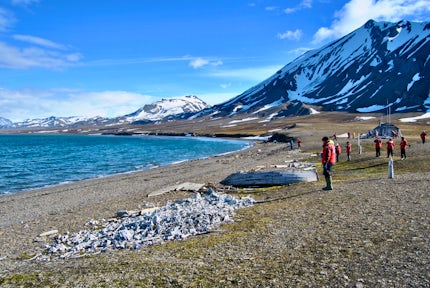
Svalbard coastline
You can typically expect two landings per day, always accompanied by your onboard expedition team whose first job it will be to sweep every site for polar bears.
Traveling by zodiac you might cruise across the snout of the 14th July glacier in Krossfjorden, explore the bird cliffs off Fugelsongen, or delve into hidden coves. Some of the best wildlife experiences occur whilst on these versatile little boats. For the even more adventurous, at many of these sites it is also possible to paddle in kayaks, snorkel, and dive.
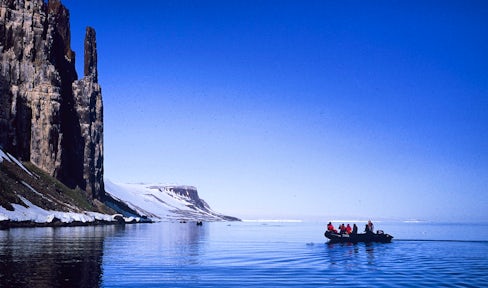
Alkefjellet bird cliffs, home to tens of thousands of guillemots
On shore you will be able to explore the Arctic tundra; keeping watch for arctic fox, hare and reindeer. Selected voyages may also allow you to don snowshoes or skis to travel across the snow.
The scenery of Svalbard is spectacular and dotted around the archipelago there are Russian mining towns, abandoned whaling stations and trappers huts dating back over the centuries. All of these make for fascinating landings when explored with expert guides.

Zodiac cruising in Svalbard
As the name suggests these shorter trips (7-10 days) offer an excellent introduction to Svalbard, with daily off-ship excursions and good opportunities for wildlife sightings.
Special Offers:Swoop has access to the widest range of offers and can help you find the right trip, cabin, & price.

This popular introduction to Svalbard is keenly priced and, with numerous early season departures, guarantees plenty of ice. Sail onboard one of the newest ships in polar waters and spot bears from the plentiful deck space. Optional kayaking and hiking…
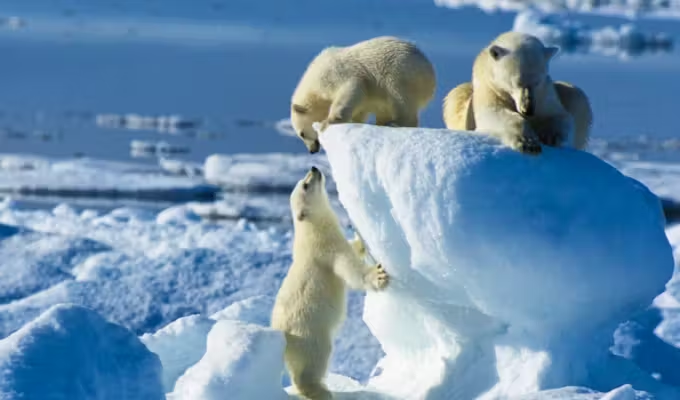
Scouting Svalbard’s ice floes for wildlife by zodiac and on foot, cruising the magnificent 14th of July glacier and reaching the world’s most northerly settlement at Ny Ålesund are just some of this 10-day voyage’s many highlights. There's also the…
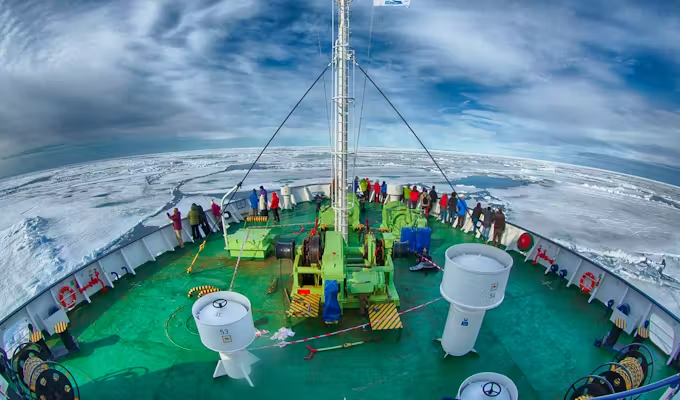
Let the midnight sun guide the way as you sail north to Phippsøya, just 540 miles from the geographical North Pole. En route you'll experience calving glaciers and teeming colonies of seabirds, walrus and whales, all while keeping a sharp…
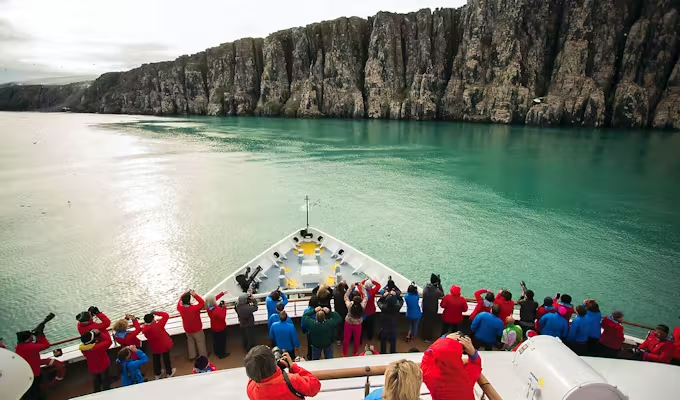
Sail to Svalbard aboard a sleek, elegant and all-inclusive expedition vessel in serious comfort. Not to be confused with a cruise, this is definitely an expedition with daily landings and a serious emphasis on wildlife sightings and experiencing the real…

For anyone keen to experience Svalbard’s rich Arctic wildlife and spectacular scenery while travelling comfortably, this is a good option. Travelling in the company of naturalists on board a modern state-of-the-art ship, equal attention is given to your experience both…

Truly escape the modern world and explore Svalbard on board a schooner. Sail north through the melting spring ice, spot wildlife and learn about the archipelago’s rich history. Highlights include the Monaco Glacier, 17th century whaling settlements, close encounters with…

Explore the fjords and ice of Svalbard keeping a close watch for polar bears onboard a choice of three truly exceptional small expedition ships. Spend time on deck, on land and in zodiacs with the hugely experienced guides learning about…
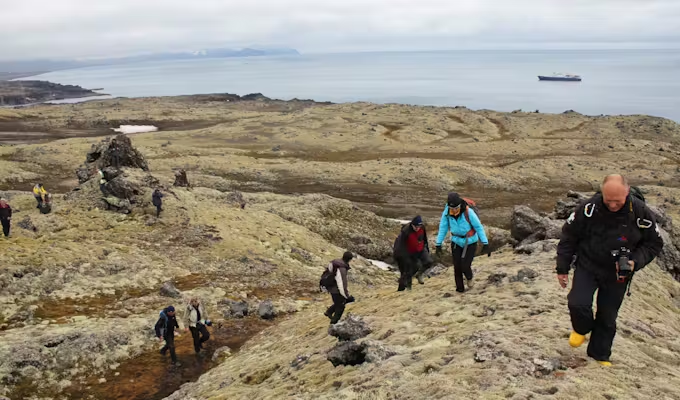
Setting sail from Scotland, this iconic journey island hops its way northwards before bisecting the Arctic Circle and spending time exploring the captivating Arctic archipelago of Svalbard. The little-visited islands of Fair Isle and Jan Mayen are a real treat,…
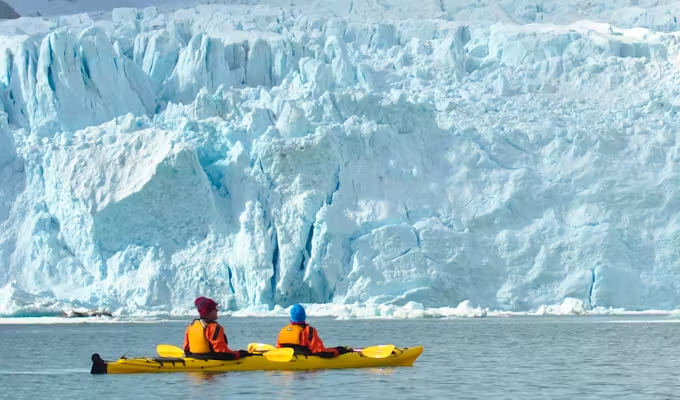
Using the ship as your comfortable ‘basecamp’ and travelling slower to enable more time for exploring each location – on foot, by kayak and through the lens of your camera – this is an ideal trip for the active traveller seeking quality…
These longer trips (11-14 days) not only improve your chances of wildlife sightings, but the later departures also offer the opportunity to do a full circumnavigation of Spitsbergen.
Special Offers:Swoop has access to the widest range of offers and can help you find the right trip, cabin, & price.
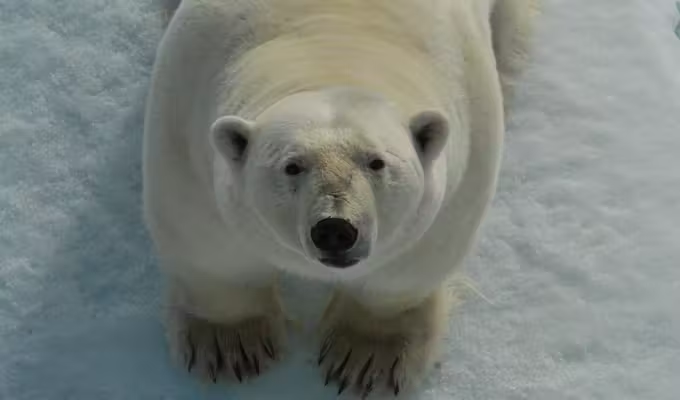
Travelling at the height of summer, this trip is the longest of any Svalbard cruise and offers the best possible conditions for thrilling wildlife encounters. Your circumnavigation of Spitsbergen includes huge glaciers, epic bird cliffs and ice-choked channels. Plus, there's…
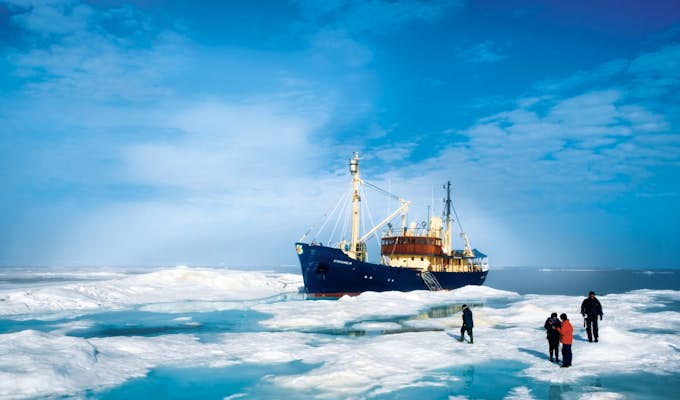
Circumnavigate Spitsbergen on board a choice of three small ships and in the company of specialist guides. Travelling in such small groups allows you more time to explore, and some late-season departures benefit from stunning autumn light. Ask about special…

Maximise wildlife sightings with the chance to circumnavigate Spitsbergen island. Search for walrus, arctic fox, whales and of course the ‘King of The Arctic'. Sail through the Hinlopen Strait and visit abandoned trapping stations and experience glaciers up close all…
While Svalbard has more than enough appeal to keep you captivated, there are also some spectacular longer trips (14-24 days) which combine Svalbard with its near neighbours.
Special Offers:Swoop has access to the widest range of offers and can help you find the right trip, cabin, & price.
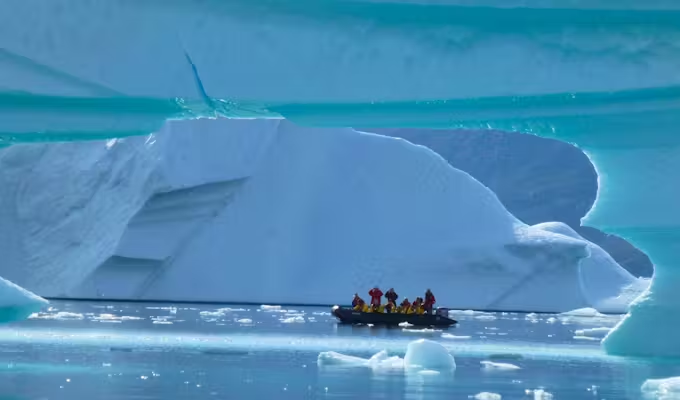
Introductions to the High Arctic don’t come much better. Traverse wildlife-rich Svalbard via East Greenland’s towering icebergs and autumnal tundra, then continue on to Iceland. Aurora sightings are possible at any point.…
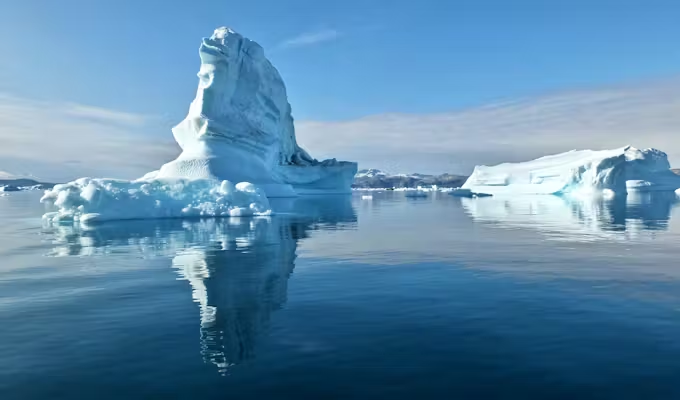
Beginning in Svalbard before sailing west across the Greenland Sea and exploring Greenland’s long eastern coastline to finish in Iceland, this is an audacious Arctic journey of startling diversity and contrast. Spectacular landscapes, towering glaciers and once-in-a-lifetime wildlife encounters all…
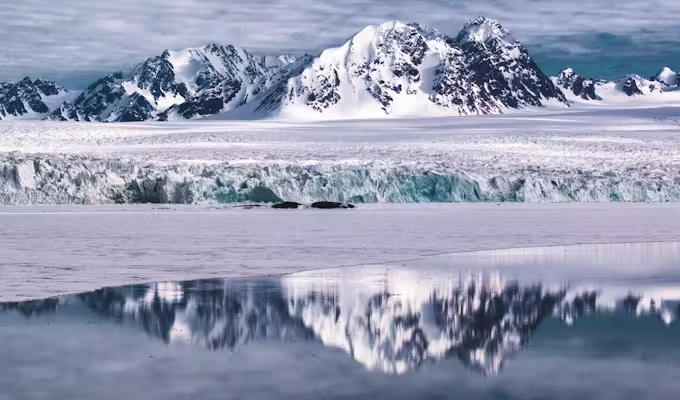
This comprehensive Arctic triumvirate encompassing Svalbard, East Greenland and Iceland offers the best of the Arctic: some of the best wildlife viewing with spectacular scenery, unspoiled fjords, gigantic icebergs and Inuit communities. You may also be lucky enough to see…
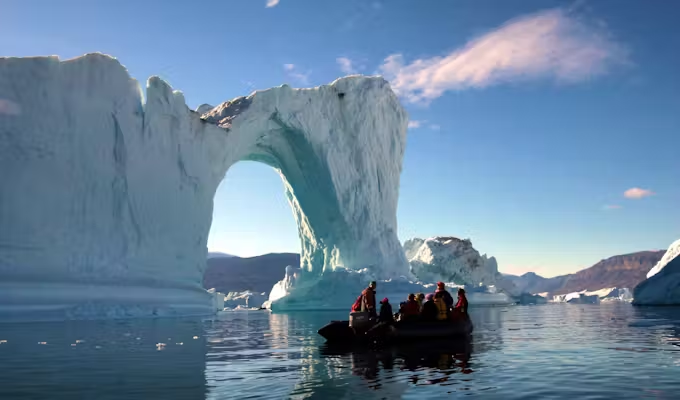
Beginning deep inside the High Arctic and finishing in subarctic Iceland, we like this voyage for its diversity, sense of journey and extended time exploring East Greenland. Zodiac cruising among towering icebergs, glimpsing the Northern Lights and tracking musk oxen…

Reach the top of the world in serious comfort onboard a state-of-the-art luxury, hybrid-powered icebreaker. Travel north through icebound waters and join the exclusive list of intrepid explorers who have visited the geographical North…
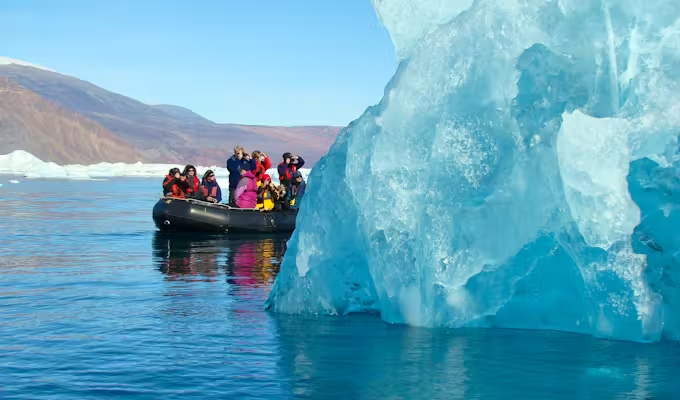
Start off in Akureyri, then cross the Arctic Circle as you sail north across the Denmark Strait and along Greenland's immense eastern coastline. The final leg of the voyage is across the Greenland Sea to Longyearbyen. This is a truly…
All kinds of opportunities to see so much wildlife and to understand how diligently Svalbard works to protect their own world. Read the full review
Travelled: June 2022
Carol Copeland - USA
Go sooner rather than later, keep an open mind, be flexible, and take the longest telephoto lens you can. Read the full review
Travelled: June 2019
Ted Schipper - Canada
If this is your first voyage to the Arctic, definitely use a specialist like Swoop. There are lots of details. Read the full review
Travelled: June 2019
Steve Liu - United States of America
Other-worldly beauty that is difficult to take in and certainly not the type where pictures would suffice. Read the full review
Travelled: June 2019
Jaime Wells - United States of America
Just go! Read the full review
Travelled: June 2018
Elizabeth & Monique Mawhood - The Netherlands
From the ship you are likely to spot king eider, fulmars and puffin. Under the waves there is an ever present chance of beluga, humpback, minke and blue whales, while orca are also regular visitors. There are more polar bears here than there are people, and while we can’t guarantee sightings you would be unlucky to not see a bear, especially on the longer trips.
Walrus regularly haul out at sites such as Poolepynten, and Brunnich's guillemots nest in their thousands on the vertiginous cliffs at Akerfeldt. Nesting sites attract arctic foxes and the open tundra, despite being in permafrost, is perfect for reindeer.

Bear sightings can happen anywhere in Svalbard
Svalbard is unrivalled of the polar regions in the spectrum of expedition ships offered. While small yachts can be chartered, there are expeditions on small ships with cabins for just 12 passengers, as well as twin-mast schooners for between 16 and 32 passengers. Larger, ice-strengthened ships fall roughly into three size categories: small (up to 70 passengers), medium (90 to 150 passengers) and large (200+ passengers).
It is important to consider the style of expedition too. Expedition teams operate in different ways on each ship, with adventures like kayaking or snowshoeing only available on specific journeys. Getting the right balance of all this is the key to getting the best out of your time in the archipelago.
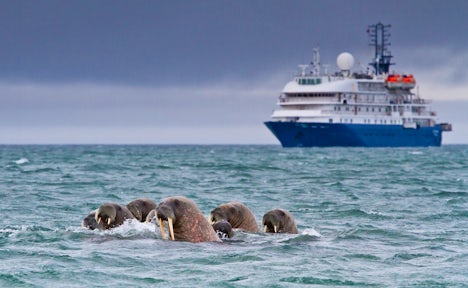
Svalbard is the perfect introduction to the High Arctic, with its dramatic scenery, calving glaciers and wildlife-rich tundra.

Svalbard is geographically closer to the North Pole than to Norway. Surprising then, that getting there is quite so straightforward, with regular flights from Norway to …
Discover More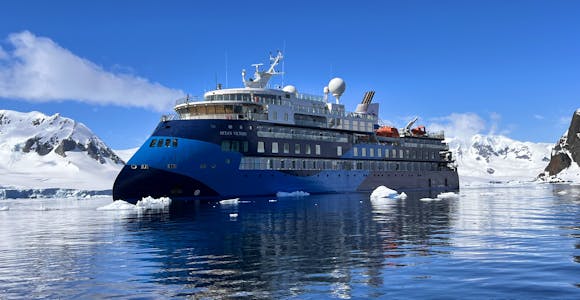
In the absence of hotels and infrastructure once you depart Longyearbyen, an expedition ship offers the best means to explore Svalbard's ragged coastline, while acting as both your…
Discover More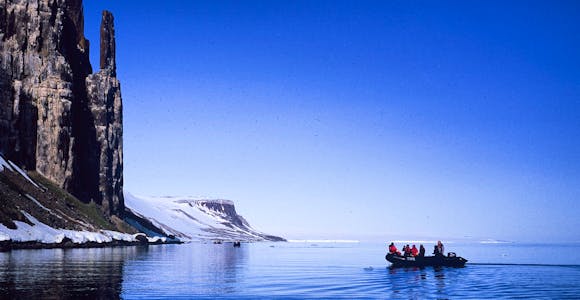
Expedition cruising is all about active exploration - trekking the arctic tundra, watching for wildlife, studying Svalbard’s history or sailing through sea ice, and accompanied …
Discover More
While Svalbard may be an almost year round destination, the changing weather, number of daylight hours, amount of ice and snow conditions through the year all have a marked effect …
Discover MoreMaking the correct choice of ship is key. With firsthand experience of all of the ships we offer, let Swoop help guide you to exactly the right one.
We'll spend some time listening to your aspirations, then discuss the kind of experience that might suit you.
Next we'll discuss the options, shortlist the best trips for you and present you our impartial recommendations.
We'll place a 24 hour hold on your preferred option - without obligation - whilst we talk through the details.
Our team of experts are ready to help you with any questions about a trip to the Arctic.
This website uses cookies to ensure you get the best experience on our website. Privacy policy
We don’t charge a commission and there are no hidden fees. Just impartial, expert advice from the leading Polar cruise agent. Schedule a call with our Arctic Experts today.